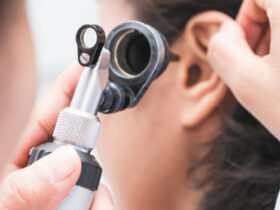By Michael E. Kriz, PT, DPT, OCS, CFMT
 One of the many factors that physical therapists consider when working with clients is cardiovascular fitness. Inactivity prompted by injury, surgery or relative inactivity may lead to a subtle decline in the function of the cardiovascular system. This phenomenon also presents itself to those who exercise regularly, whether the exercise is primarily cardiovascular or resistance training. If you have ever been consistent with an exercise program and have allowed yourself to “fall off the wagon” for several days or weeks and then returned, you undoubtedly noticed that you are unable to exercise as long or with as much intensity as prior to the layoff. We refer to the oxygen carrying capacity of our heart, vascular system and lungs as a primary contributor to this decline. Essentially, our heart works less efficiently and contracts less forcefully and the blood carries fewer oxygen carrying hemoglobin molecules per minute when we are deconditioned.
One of the many factors that physical therapists consider when working with clients is cardiovascular fitness. Inactivity prompted by injury, surgery or relative inactivity may lead to a subtle decline in the function of the cardiovascular system. This phenomenon also presents itself to those who exercise regularly, whether the exercise is primarily cardiovascular or resistance training. If you have ever been consistent with an exercise program and have allowed yourself to “fall off the wagon” for several days or weeks and then returned, you undoubtedly noticed that you are unable to exercise as long or with as much intensity as prior to the layoff. We refer to the oxygen carrying capacity of our heart, vascular system and lungs as a primary contributor to this decline. Essentially, our heart works less efficiently and contracts less forcefully and the blood carries fewer oxygen carrying hemoglobin molecules per minute when we are deconditioned.
The cardiovascular system strictly refers to the heart and blood vessels. Physical therapists consider these components but also address limitations in the mobility of the rib cage. The rib cage serves to protect vital organs including the lungs and acts as an attachment structure for many muscles, including the core and respiratory muscles such as the diaphragm. Immobility of the rib cage caused by restrictions in joint and or soft tissues of or interacting with the rib cage may lead to a reduction in the volume of air inspired and results in the reduction in oxygen to the organs and muscles.
Holding patterns refer to the positions people assume when they are in pain. For instance, those with shoulder pain often hold the arm close to the body and lift the shoulder to the ear to protect the arm from movement. This requires contraction of the muscles of the shoulder blade, the humerus and the collarbone…all have attachments to the rib cage. Pain often interferes with breathing patterns and may affect the volume of oxygen we inhale as well. We often hear of people diagnosed with sleep apnea caused by obstruction of the airways, but in the presence of pain, breathing patterns may be altered and may stop. We often find patients holding their breath in addition to their muscles affected by injury, surgery or inactivity. This will result in slower rates of healing and may increase the sense of pain and fatigue.
When we treat people with shoulder, neck or other upper body dysfunctions we assess and address limitations found in the rib cage in addition to other associated areas that may be contributing to the current symptoms or dysfunctions. With the rib cage free to expand and contract with each breath greater volumes of air enter the lungs with each breath.
People often reduce their activity when injured or after surgery because of pain but it is vital to remain as active as possible so that the affected tissues are oxygenated to help the healing process.
Oxygen is critical for cellular function on the micro level and in turn to the function of vital organs, nervous system and muscles on the macro level. Restoring mobility to the rib cage and staying active after surgery or injury are important components to maximizing the recovery process and to restore cardiovascular fitness for recreation or other pursuits once the healing process is finished.
Contact Kriz Physical Therapy Today!
27180 Bay Landing Drive, Ste. 7
Bonita Springs, FL 34135
(239) 992-6700
krizpt1@gmail.com
www.krizphysicaltherapy.com








